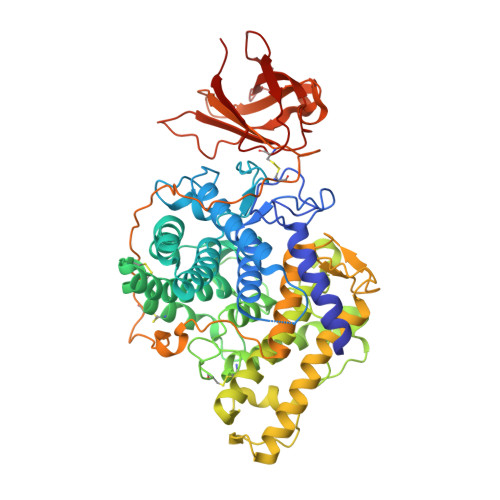Structural insight into industrially relevant glucoamylases: flexible positions of starch-binding domains.
Roth, C., Moroz, O.V., Ariza, A., Skov, L.K., Ayabe, K., Davies, G.J., Wilson, K.S.(2018) Acta Crystallogr D Struct Biol 74: 463-470
- PubMed: 29717717
- DOI: https://doi.org/10.1107/S2059798318004989
- Primary Citation of Related Structures:
6FHV, 6FHW, 6FRV - PubMed Abstract:
Glucoamylases are one of the most important classes of enzymes in the industrial degradation of starch biomass. They consist of a catalytic domain and a carbohydrate-binding domain (CBM), with the latter being important for the interaction with the polymeric substrate. Whereas the catalytic mechanisms and structures of the individual domains are well known, the spatial arrangement of the domains with respect to each other and its influence on activity are not fully understood. Here, the structures of three industrially used fungal glucoamylases, two of which are full length, have been crystallized and determined. It is shown for the first time that the relative orientation between the CBM and the catalytic domain is flexible, as they can adopt different orientations independently of ligand binding, suggesting a role as an anchor to increase the contact time and the relative concentration of substrate near the active site. The flexibility in the orientations of the two domains presented a considerable challenge for the crystallization of the enzymes.
Organizational Affiliation:
Structural Biology Laboratory, Department of Chemistry, University of York, Heslington, York YO10 5DD, England.




















